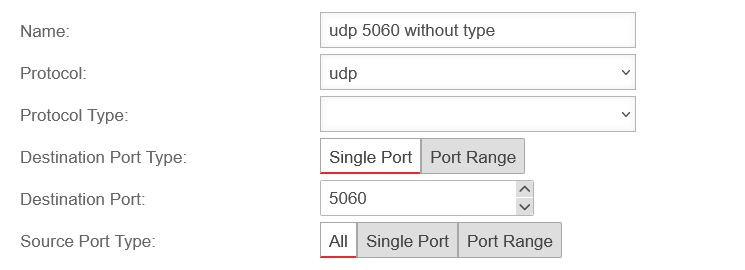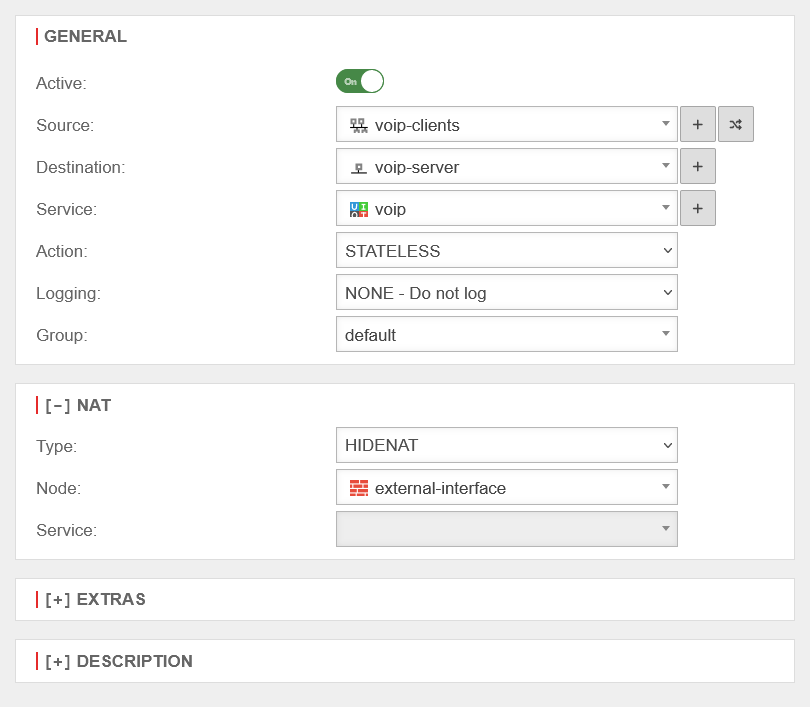Settings in the UTM firewall for VoIP devices when the UTM is located between the VoIP server and the VoIP clients.
Last adaptation to the version: 12.6.0
New:
- Updated to Redesign of the webinterface
notemptyThis article refers to a Resellerpreview
07.2022
11.8
Starting point
If there is a UTM between VoIP end devices and a VoIP server, it is necessary to create an additional packet filter rule that enables VoIP with NAT.
The connection is established via SIP, the device logs on to the VoIP server with its local IP. The voice packets themselves are then sent via rtp on other ports.
In order to make the VoIP client and the rtp ports in the local network available from outside - in this case accessible for the VoIP server - it is necessary to create a packet filter rule for this.
Packetfilter rule
VoIP without SIP Helper
The predefined service sip (contained in the packet filter group voip) has the protocol type sip, which loads the Application Layer Gateway (ALG) modules.
If VoIP is to be performed without the sip helper and thus without ALG, a new service must be created that uses port 5060 UDP without the protocol type sip.
Button Add object
Create service
| Caption |
Value |
Description
|
 New service New service
|
| Name: |
udp 5060 without type |
Prominent name
|
| Protocol: |
udp |
|
| Protocol type: |
|
Leave blank!
|
| Destination port type: |
Single portPort range |
Only one port is needed
|
| Destination port: |
5060 |
Destination port for sip via udp is 5060
|
| Source port type: |
AllSingle port Port range |
The clients can establish the connection via various ports
|
| Save and close |
Create the service
|
Create service group
Subsequently, a new group should be created under
Service groups with
Add group:
| Caption |
Value |
Description
|
| Name: |
voip without ALG |
Prominent name
|
| Services: |
× udp 5060 without type Destination ports:5060 udp 5060 without type Destination ports:5060
× rtp Destination ports: 7070:7089 rtp Destination ports: 7070:7089 |
The newly created service for udp (port 5060) and the service rtp (ports 7070-7089) must be included
|
Packetfilter rule
There is no longer a need to load or unload the sip-Helper modules via CLI

